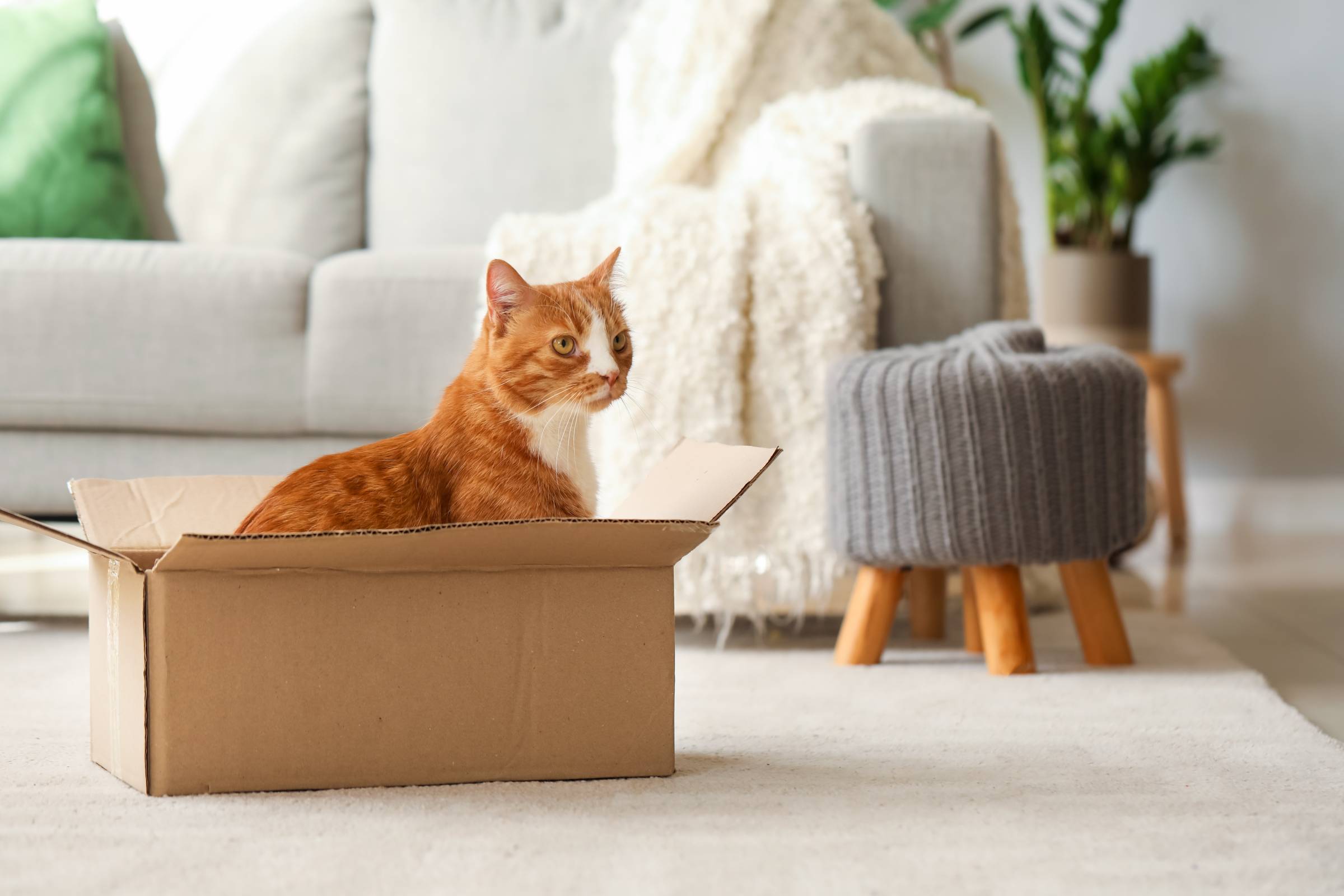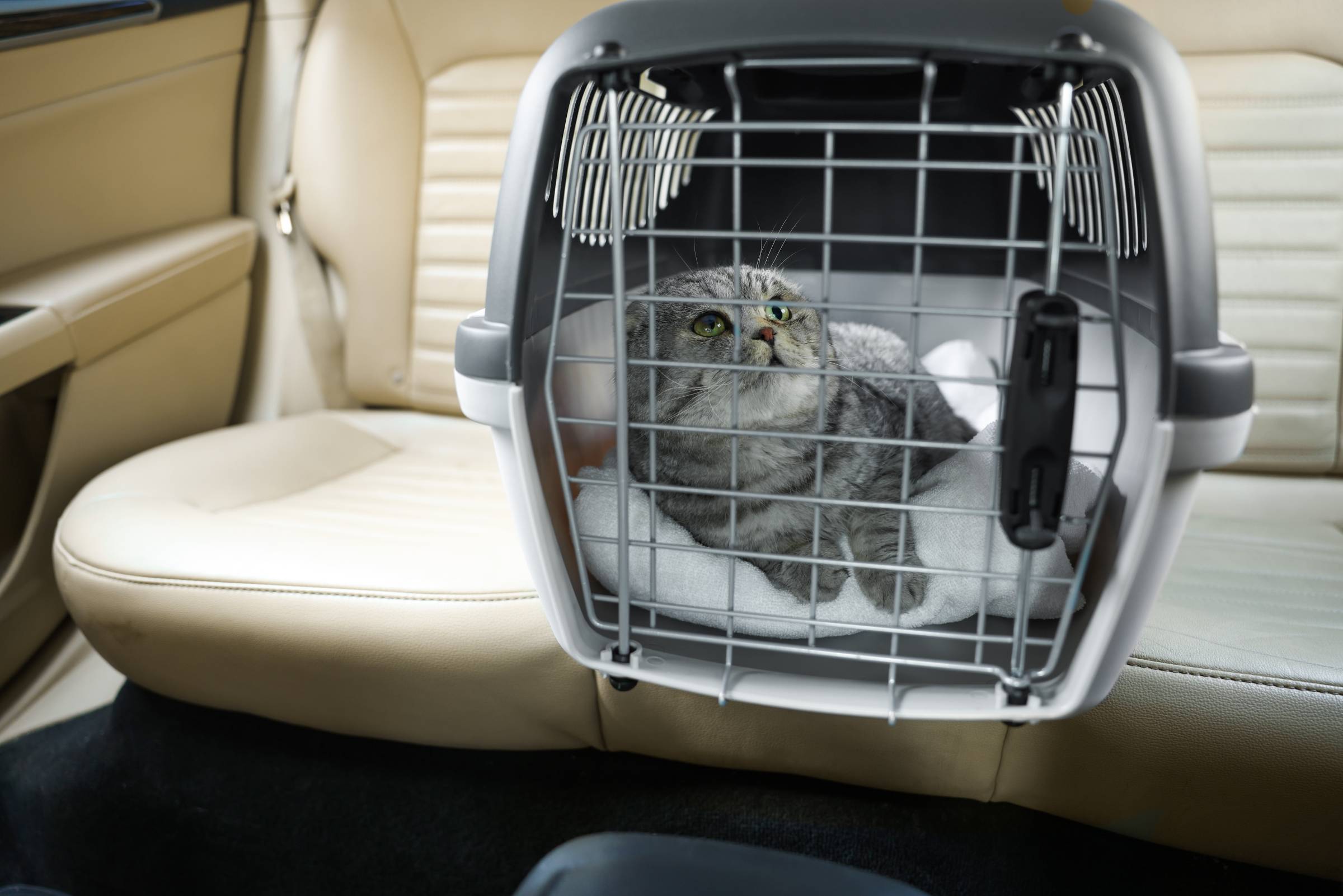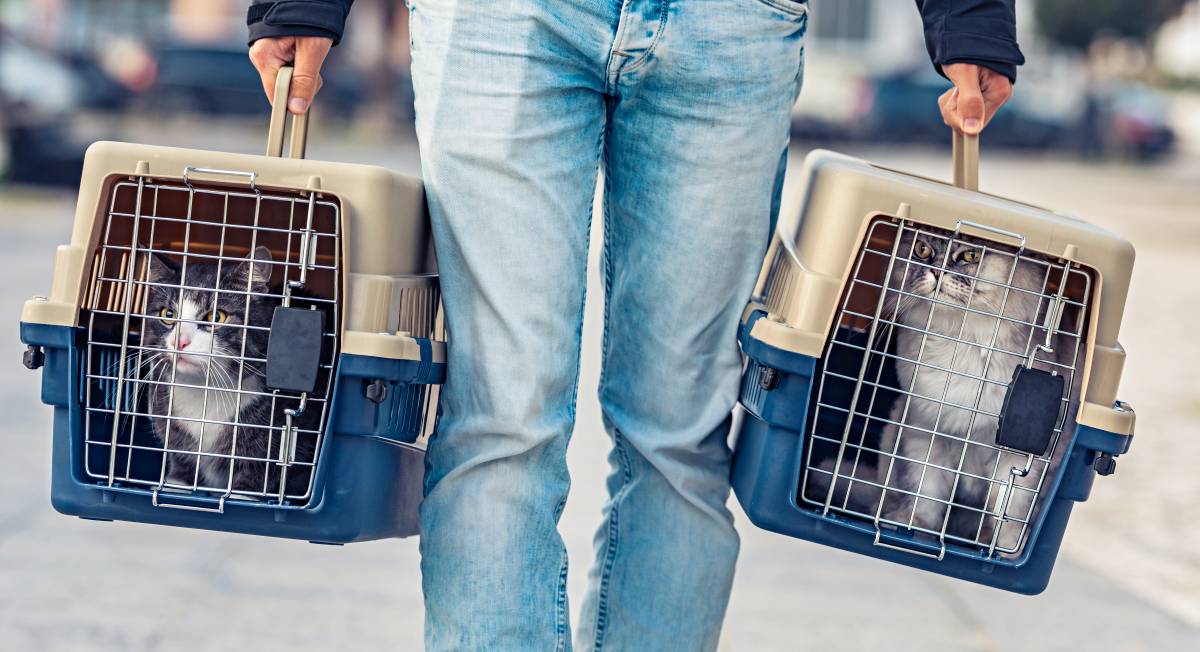- Home/
- Checklists/
- Pet Transport/
- Moving House with Cats

Your simple checklist for moving house with cats
Plan for a smooth move for you and your furry friends.
Get moving helpLast Updated on
Are you eyeing to move anytime soon? Perhaps you’ve already considered the miles or the hassle of transporting all your things. But if you’ve got a feline friend coming along, you’re strategising about moving house with a cat.
It can be tricky, mainly if your cat is not used to travelling. Fret not—this guide covers helpful and easy-to-follow tips!
Knowing how to move house with a cat
What to do before moving house with cats
☐ Choose the right type of pet carrier
The first thing to do when preparing cats for a move is to get a travel carrier. But getting the right one is critical to your cat’s comfort and safety. It should also be spacious for your cat to stand, turn around, and move easily. If you have more than one cat, get an extra-large one to fit them.
☐ Introduce the travel carrier
Let your cat warm up to the pet carrier when you get it. Don’t wait until moving day! Cats need time to acclimate, so you can leave the carrier lying around the house days or weeks before the move. Keep the door open and let your cat become familiar with it. You can also put a blanket inside to make it cosy.
☐ Gradually pack your belongings
Cats are creatures of habit. It can upset or stress them if they suddenly see adjustments in the home. Try to pack your things little by little to prevent overwhelming your cat with abrupt changes. Better yet, get help from a trusted furniture or house mover for hard-to-pack and fragile items.
☐ Ensure your cat’s safety
Packing up your stuff can leave your home with scattered things. Luckily, you can get help from professional packers and movers. But remember to keep your cat in a separate room. This will prevent instances like your cat knocking down things, causing accidents, or bolting out the door. You can even opt for a cat sitter to look after them while you're packing if you have some extra budget.
☐ Update your feline’s identification
When moving with cats, a commonly overlooked task is changing their ID tags. Doing this is crucial so it’s easier to identify and bring your cat back to you in case of a runaway or slip-away incident. You may also choose to have your cat microchipped.

4 Tips and things to know during the move
1: Be ready for motion sickness
Cats can get motion sickness. Some of the signs are heavy drooling, vocalisation, and vomiting. Hence, skipping the heavy meal and going for something light before the trip will help settle the stomach. If your cat has a history of motion sickness, consult your veterinarian for medications.
2: Have your cat’s essentials on board
Ensure you have everything your cat needs. This includes food, water, bowls, pillows, and blankets or towels. You can also add your cat’s favourite toy to the carrier. Bringing items with familiar scents will help aid in self-soothing. Don’t forget your cat’s other belongings, such as a pet harness, leash, vitamins or supplements, medications (if any), and additional toys.
3: Take breaks for long drives
Ideally, travelling with your chosen pet taxi or private vehicle is best. You can go on multiple stopovers if the trip takes several hours. You can walk your cat out on a leash and allow for some stretching time. Breaks are also helpful if your cat gets motion sickness or anxious in the car.
4: Consider pheromones for your cat
Pheromones are chemicals cats produce and use to communicate with each other. Cats generally feel a sense of comfort and familiarity with the presence of pheromones. Catnip is a herb that acts like a cat pheromone, producing positive and happy feelings. You can buy pheromone sprays, catnip leaves, or balls from local pet shops.

How to transition a cat to a new home
Start small
Don’t overwhelm your cat by exposing them to a large unfamiliar territory. You can ease into the transition stage by introducing a small room first. Remember to secure doors and windows to prevent any runaway mishaps.
Be patient and do what you can to help
Moving house cats can be stressful and take a toll on them. Give your cat time to adjust, but most importantly, share extra TLC. You can try dabbing a clean cloth on your cat’s face, then wipe it around the new home or spots that cats usually rub against. This will help your cat feel more at home. Pheromones or catnip is also a good way to get a cat used to a new home.
Additional tips
If you’re moving an older cat to a new home, it’s best to be extra patient and accommodating to their needs. Senior cats may be more sensitive, stubborn, or difficult to travel with. Watch out for your feline friend and keep the travel as stress-free and peaceful as possible.
You can still apply the tips above when travelling long distances or moving across the country. But be more mindful and have an extra supply of essentials to compensate for the long trip. Find a pet-friendly hotel or accommodation if needed.
The best way to move house with a cat
Cats have varying personalities; some can tolerate travelling and moving, while others make it almost impossible. Whether your cat is the former or the latter, you can always call a pet transport expert to have your back. If packing and moving are too much to bear, you can also hire a professional for your moving needs. Post a task today!
FAQs on moving with cats
It can take a few weeks for your cat to settle down and feel safe in a new home. Remember to be patient and supportive!
Cats are reluctant to move and make changes. But that doesn’t mean they can’t adapt to a new home. It simply takes time.
You can let your cat out immediately as long as all doors and windows are securely shut. But starting with a small room is best to prevent overwhelming your cat. Be sure that fragile items are also put away.
It’s normal for your cat to seem sad, distant, or depressed during the transition stage after moving. But things should return to how they were once your cat has adjusted.
It’s possible, especially if they have experienced a long, exhausting journey. That’s why keeping your cats as comfortable as possible during your move is crucial.
Find pet transports, fast
Post a task
Related articles
Related price guides





